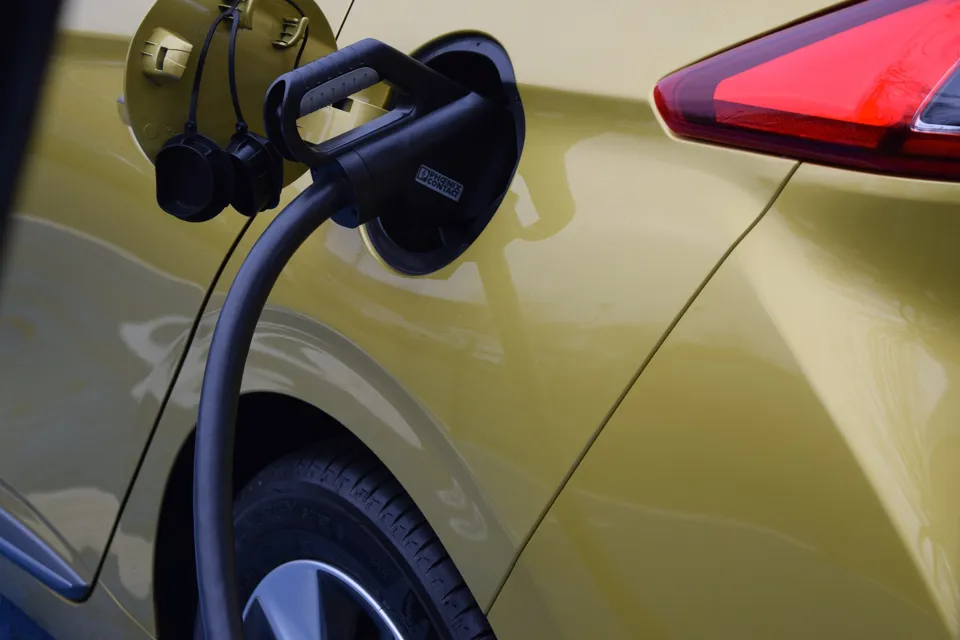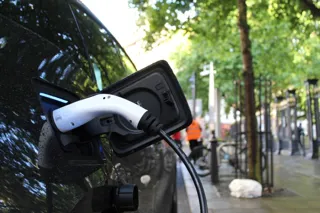The Government will spend £1.6 billion to build a network of 300,000 electric vehicle (EV) chargers by 2030.
It represents an increase of around 10 times the current number of publicly available chargers.
In announcing its much anticipated Electric Vehicle Infrastructure Strategy, the Department for Transport (DfT) said charging an EV will become easier and cheaper than refuelling a petrol or diesel car.
Ministers recognise that the current pace of roll out is "too slow" and that the public charging network "lets people down" in terms of reliability and transparency of pricing.
READ: The Government’s Electric Vehicle Infrastructure Strategy
New legal requirements are being introduced this summer for chargepoint operators, mandating that they provide real-time data about chargepoints so consumers can compare prices and use apps to find their nearest available chargepoint.
Users must also be able to pay for charging by contactless card and the Government has set a 99% reliability rate for rapid chargepoints. It is also committing to improve access for disabled users.
Transport Secretary Grant Shapps said: “No matter where you live – be that a city centre or rural village, the north, south, east or west of the country – we’re powering up the switch to electric and ensuring no one gets left behind in the process.
“The scale of the climate challenge ahead of us all is well known and decarbonising transport is at the very heart of our agenda.
“That’s why we’re ensuring the country is EV-fit for future generations by the end of this decade, revolutionising our charging network and putting the consumer first.”
£500 million will be invested to bring public chargepoints to communities across the UK. This includes a £450 million Local Electric Vehicle Infrastructure (LEVI) fund, which will fund projects such as EV hubs and on-street charging solutions.
A pilot scheme for the LEVI fund, launching today (March 25), will see local authorities bid for a share of £10 million in funding, allowing selected areas to work with industry and boost public charging opportunities.
Meanwhile, the LEVI funding includes up to £50 million to fund staff to work on local challenges and public chargepoint planning – ensuring that any development complements all other zero emission forms of travel, such as walking and cycling.
The Government has also announced a new Geospatial Commission project to explore what electric vehicle charge point data is required by local authorities. This is part of an obligation for local authorities to develop and implement charge point strategies that facilitate the transition to zero emission.
The existing £950 million Rapid Charging Fund will support the rollout of at least 6,000 high powered super-fast chargepoints across England’s motorways by 2035, while every motorway service area will have at least six high powered charge points by 2023.
The private sector will continue to play a key role in the rollout of chargers and BP Pulse has announced its own plans to spend £1 billion over the next ten years, tripling its own network of charge points in the UK.
Richard Bartlett, senior vice president of BP Pulse, said: “This investment allows us to deliver more. More high-speed charging in dedicated hubs and on existing fuel and convenience sites. More home charging services. And crucial enhancements to our digital technology that will make charging fast, easy and reliable.”
The BVRLA has welcomed the Government’s new EV Infrastructure Strategy, but said it would like to see a similarly comprehensive approach taken in addressing the infrastructure needs of fleets - particularly those that operate commercial vehicles.
BVRLA chief executive Gerry Keaney said: “It is not simply about having more chargers, we need the right solutions, placed strategically to be accessible to all drivers.
“We know that Government and officials are keen to learn about and support fleets with their infrastructure challenges. As a sector that buys and operates more than 50% of EVs in the UK, we would like to see these priorities acknowledged, with more consideration given to appropriate support and interventions.
“We have particular concerns around charge point accessibility for commercial vehicles and believe that the Government needs to start planning for HGV-compatible infrastructure as soon as possible.”
David Rose, head of product at Alphabet (GB), says that charging still remains a new part of the fleet journey for many.
"It is encouraging to see the Government prioritise EV charging points and set ambitious targets to make lower emission cars more accessible for both consumers and businesses," said Rose.
"This supports businesses in both the leasing and EV space who are also working on progressing charging infrastructure as quickly as possible and supporting new EV drivers with their vehicles."
> Interested in comparing electric vehicle data? Check out our EV tool.
> Interested in ensuring the efficient use of EVs. Check out our dedicated editorial sections: Insight & policy | EV news | Charging & infrastructure | Costs & incentives | Benefit-in-kind | EV case studies | EV road tests





















Login to comment
Comments
No comments have been made yet.